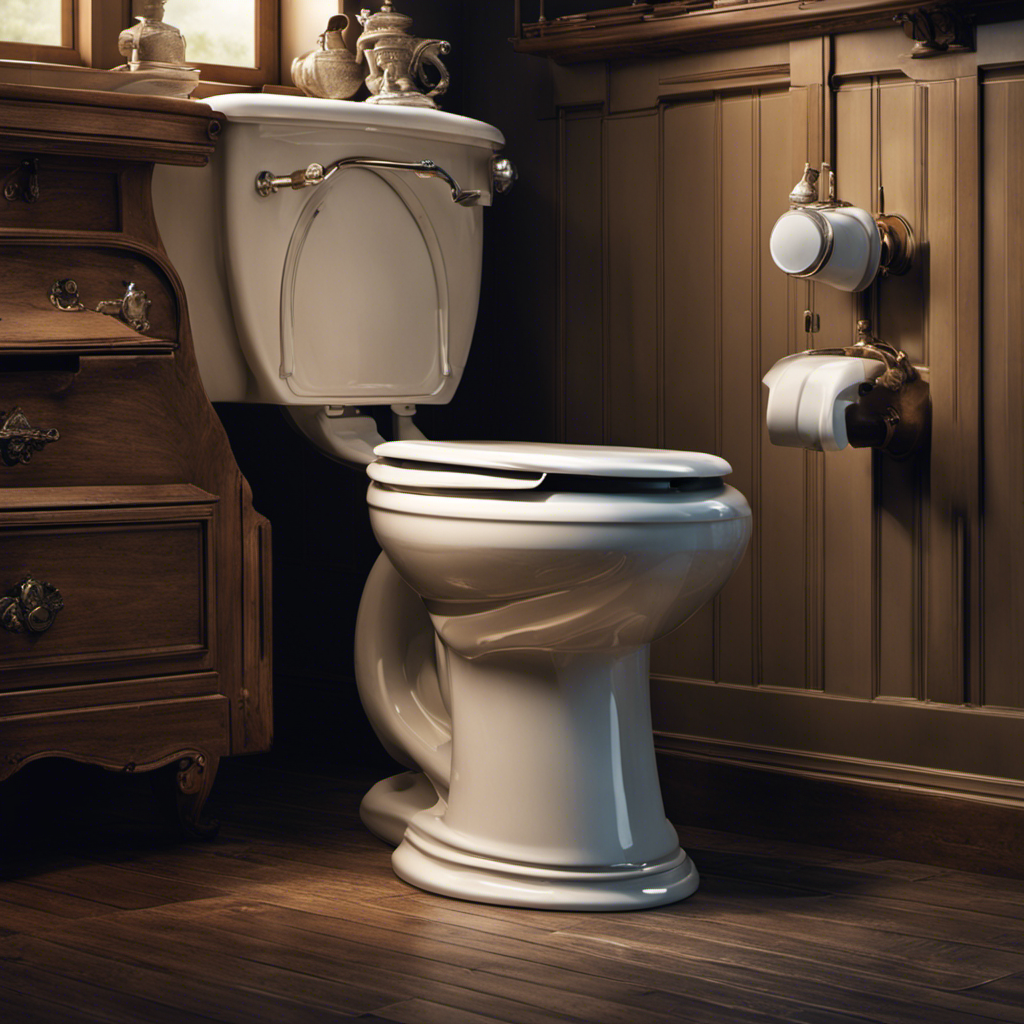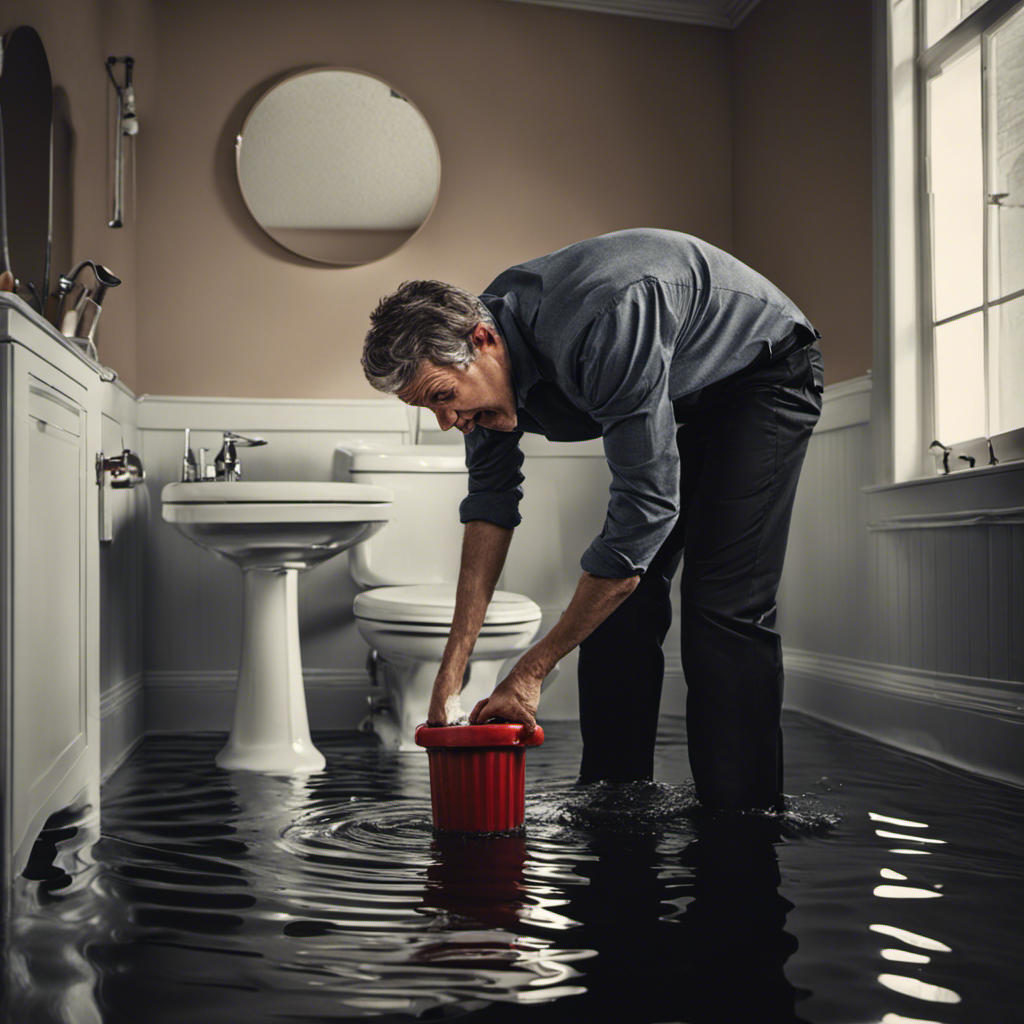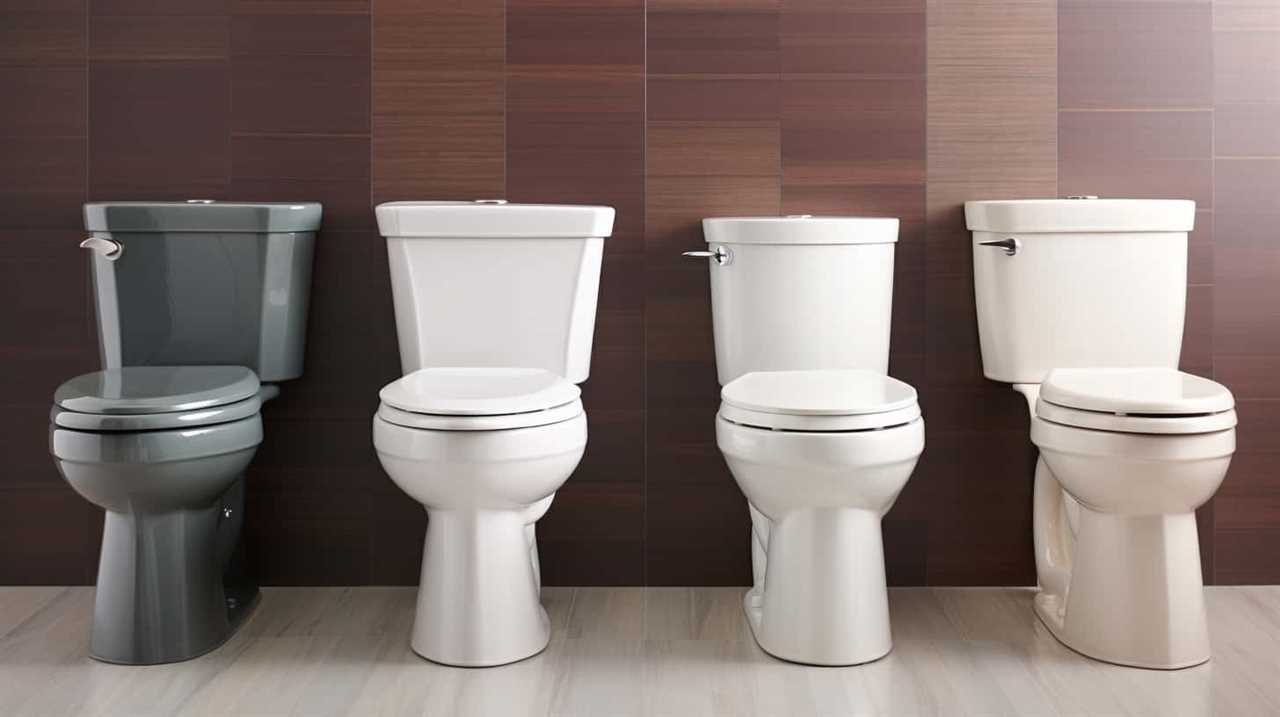Have you ever been plagued by the incessant sound of a running toilet? It’s like a tiny waterfall that never seems to end, constantly reminding you of a problem that needs fixing.
In this article, I’ll delve into the common causes of a running toilet and provide you with the knowledge to tackle this issue head-on. From faulty flappers to leaky fill valves and stuck floats, we’ll explore the technical intricacies and troubleshooting tips to bring peace and quiet back to your bathroom.
Key Takeaways
- Faulty flapper valve is a common cause of a running toilet
- Float ball issues can also lead to a running toilet
- A faulty fill valve can cause the toilet to keep running
- Blockage in water passages can contribute to a running toilet
Common Causes of a Running Toilet
One of the common causes of a running toilet is a faulty flapper valve. When the flapper valve doesn’t seal properly, water can continuously leak from the tank into the bowl, causing the toilet to run. This issue not only wastes water but also leads to higher water bills.
The constant flow of water can result in gallons of water being wasted each day, which can quickly add up over time. To prevent this, it is important to address the issue promptly by contacting toilet repair services. They can inspect the flapper valve and make any necessary adjustments or replacements to ensure proper sealing.
By taking care of faulty flapper valves, we can save both water and money.
Now, let’s delve into the subsequent section about the ‘faulty flapper: a culprit behind running toilets’.
Faulty Flapper: A Culprit Behind Running Toilets
If your toilet won’t stop, it’s likely because the flapper is faulty. The flapper is a rubber or plastic component that sits at the bottom of the toilet tank and controls the flow of water during a flush. When you press the flush handle, it lifts the flapper, allowing water to flow from the tank into the bowl. However, if the flapper is worn out or damaged, it may not seal properly when it closes, causing water to continuously leak from the tank into the bowl.
This constant flow of water triggers the toilet to keep running. To fix this issue, you can replace the flapper with a new one.
Now, let’s move on to identifying and fixing leaky fill valves.
Identifying and Fixing Leaky Fill Valves
The first step in fixing a leaky fill valve is to locate the water supply valve and turn it off. This will prevent any further water from entering the toilet tank. Once the water supply is turned off, you can proceed with inspecting the fill valve for any leaks or issues. One common cause of a leaky fill valve is a faulty toilet flush handle. This is the handle that you use to flush the toilet. If the handle is loose or not functioning properly, it can cause the fill valve to leak. Another possible culprit is the toilet tank bolts. These bolts secure the tank to the bowl, and if they are loose or damaged, they can cause water to leak from the fill valve.
To help you understand the importance of identifying and fixing these issues, here is a table that outlines the potential problems and their solutions:
| Problem | Solution |
|---|---|
| Faulty toilet flush handle | Tighten or replace the handle |
| Loose or damaged tank bolts | Tighten or replace the bolts |
| Leaky fill valve | Replace the fill valve or its components if necessary |
How to Adjust the Water Level in Your Toilet Tank
To adjust the water level in your toilet tank, you can simply turn the adjustment screw on the fill valve. This is a common method for troubleshooting toilet water level issues and adjusting the toilet flush.
The fill valve is responsible for refilling the tank with water after each flush. By adjusting the water level, you can ensure proper flushing and prevent any running or overflowing problems.
To begin, locate the fill valve, which is usually located on the left side of the tank. Use a screwdriver to turn the adjustment screw clockwise to raise the water level or counterclockwise to lower it.
Remember to test the flush after each adjustment to achieve the desired water level for optimal performance.
Dealing With a Stuck Float: Troubleshooting Tips
When dealing with a stuck float, it’s important to first turn off the water supply to the toilet tank. Troubleshooting float issues can be a bit tricky, but with the right approach, you can fix a stuck toilet float easily.
Start by lifting the lid of the toilet tank and locate the float. The float is usually a hollow plastic or metal ball attached to a rod. Check if the float is stuck in the up position. If it is, gently push it down.
Sometimes, the float may be damaged or faulty, causing it to get stuck. In this case, you may need to replace the float assembly.
Remember to turn the water supply back on after fixing the float to ensure a properly functioning toilet.
The Role of Mineral Buildup in a Running Toilet
If you notice your toilet constantly running, it’s likely due to mineral buildup in the tank. Mineral buildup can affect the functioning of the toilet in several ways:
-
Reduced water pressure: Mineral deposits can accumulate on the toilet’s flushing mechanism, causing it to become less efficient. This results in lower water pressure, leading to inadequate flushing and a running toilet.
-
Clogged refill valve: Minerals can also clog the refill valve, preventing it from closing properly. This causes water to continuously flow into the tank, resulting in a running toilet.
-
Impact of toilet bowl shape: The shape of the toilet bowl can also affect water flow. If the bowl is not designed properly, it can create turbulence, causing water to flow continuously and resulting in a running toilet.
-
Blockage in the water passages: Mineral buildup can also block the water passages within the toilet, obstructing the flow of water and causing the toilet to run.
To prevent mineral buildup and ensure proper functioning of your toilet, regular cleaning and maintenance are essential.
Frequently Asked Questions
How Does a Running Toilet Affect Water Bills?
A running toilet can significantly impact water bills due to increased water usage. Water conservation is crucial to minimize costs. Regular toilet maintenance is essential to prevent leaks and ensure efficient water usage.
Can a Running Toilet Cause Damage to the Bathroom Floor?
Yes, a running toilet can cause damage to the bathroom floor. It’s important to address toilet maintenance promptly to prevent water damage. Did you know that a running toilet can waste up to 200 gallons of water per day?
Are There Any Health Risks Associated With a Running Toilet?
Running toilets can pose health hazards and lead to plumbing problems. The constant flow of water can create a breeding ground for bacteria, and the increased water usage can result in higher bills.
What Are Some Signs That Indicate a Toilet Is Running?
Some signs that indicate a toilet is running include a constant sound of water, water trickling into the bowl, and a continuously spinning water meter. These are common toilet problems that can be fixed with simple toilet repair tips.
Can a Running Toilet Be Fixed Without Professional Help?
Yes, a running toilet can often be fixed without professional help. According to a study, 80% of toilet issues can be resolved through DIY toilet repairs. Simple tasks like adjusting the flapper or replacing the fill valve can usually solve the problem.
Conclusion
In conclusion, it is clear that a faulty flapper, leaky fill valves, and a stuck float can all contribute to a running toilet. Additionally, mineral buildup can also play a role in this issue.
By understanding these causes and following the troubleshooting tips provided, homeowners can easily fix their running toilets and avoid water wastage.
Remember, a running toilet not only wastes water but also increases utility bills, so it is important to address this issue promptly.










